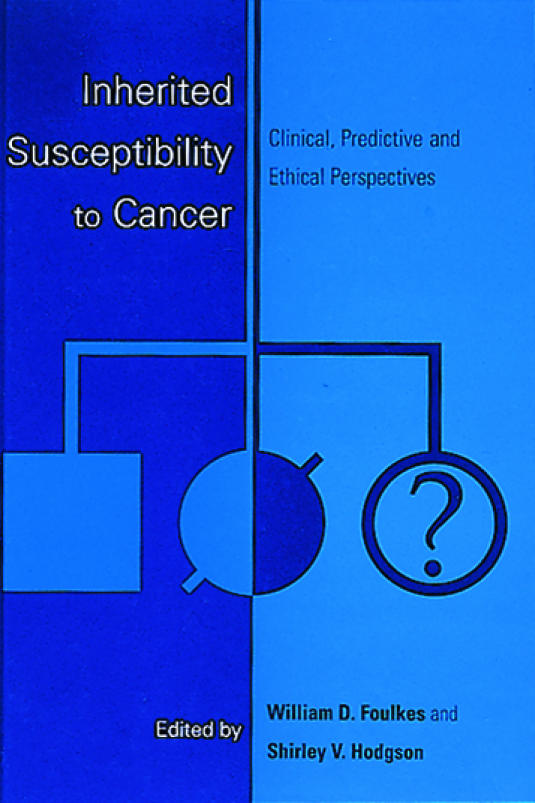Ed William D Foulkes, Shirley V Hodgson
Cambridge University Press, £60, pp 471 
ISBN 0 521 56340 2
———————
Rating: ★★★
As its title suggests, this book comprehensively marries the clinical, predictive, and ethical issues that arise from identifying genes that indicate increased risk of cancer. It also effectively and in an accessible manner conveys the criteria for genetics testing and what is known of the biology underlying most known inherited cancers. The book is timely in its scope. As knowledge about inherited susceptibility to cancer increases and additional susceptibility genes are identified, there seems to be a greater need for multidisciplinary teams to care for the medical and psychological needs of families with hereditary cancer syndromes.
The growing access to genetic information has left society at large in a state of anxiety over its consequences. As Knoppers and Godard and Nelkin point out, if genetic susceptibility tests become freely available they may have repercussions in many spheres of our lives. On the one hand, public demands and expectations for treatment and cure of disease are increased, but, on the other, information about individuals’ inherited susceptibility to cancer could severely limit their access to health care, life insurance, etc.
Although genetic tests are available for some inherited cancers, our increased understanding of genetic disease does not necessarily lead to benefits beyond the ability to predict. The next hurdle is translation of biological understanding of the disease to its treatment. As the chapter on “late-breaking developments” shows, we are far from effective treatment for these cancers. It is to be hoped that formation of counselling programmes for familial cancer will not only offer a suitable context for testing susceptibility but could also serve as a framework for technological advances to follow in every aspect of cancer care—surveillance, diagnosis, treatment, and follow up.
Although this book deals with highly penetrant inherited cancers, it is likely that most cases of cancer occur because an individual has been exposed to certain carcinogenic and environmental agents and that inherited factors have rendered them more susceptible to the effects of these agents. Genes conferring a small increased susceptibility to cancer will be much more difficult to identify, and counselling of people found to have such a susceptibility will be difficult. Nevertheless, the book makes a good attempt at marrying different disciplines in a good overview of genetic testing for inherited cancers.


